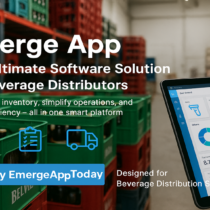25 Wholesale Terms Every Business Owner should know

Wholesale business thrives purely only on hard work and knowledge.
You can’t stop learning in a wholesale business, there are a lot of things, terms and ways that could help in making your wholesale a success.
There are some terms that you should know with changing time, which should be in your vocabulary.
Let’s concentrate on them and read what they are about.
25 Essential Wholesale Terms – Wholesale Terminology
Lead-time
The time difference between placing the order and when it is ready to ship.
This is also known as turnaround time. You can determine lead-time in hours, or business days.
There are many factors that affect lead-time.
For example:
- Does your product need a final art approval? Lead times begin when the product has got approved.
- The frequency at which you check your orders, at the end of the day, or every hour.
- Sometimes it takes reasonable time to get ready the product, this will also include as lead-time.
Minimum Order Quantity
The minimum quantity of a particular item the customer needs to place an order.
This could differ from an item to item.
Suppose, from a bookstore, you need to buy at least 3 books for placing your order. This could change for magazines from the same shop, maybe for magazines, the limit is only 2.
MOQ depends upon the margin of charges in shipping, delivering and processing to the cost of books. Only if you’re making a profit after these charges, then it is possible to place an order.
Sometimes, a certain raw material is required for a product, mainly in art stores, then MOQ depends upon the raw material you’re going to use.
Because you don’t want to waste the raw material just by making a single unit out of it.
Order Minimum
The minimum amount of purchase set by the retailer for placing your order.
This could be $5 or any in case, the amount totally depends upon the retailer.
Mainly it is the cost of initial investment that would be required to make the ordered product.
Sometimes, it is the limit above which the retailer starts making a considerable profit. It is different from MOQ because in that case, a number of items are considered, here it’s the money.
This aspect of the business is important, and you should definitely spend some time on accounts, judging the order minimum and setting the bar.
Back-order
Sometimes it happens that the ordered products are not in the stock, this would restrict a retailer to ship them. The order is then called a back order, or products are back ordered.
Suppose an order is placed, and there are three items, you only have two available, so you back order the third, and ship the other two. You can ship that item when available to you.
Some retailer would cancel the third item, and reorder it when available. It is easy for them to manage receipts that way. Backorder is not a good thing to happen, but in the retail business, it is quite common.
Case Packs
The order must be in multiples of a case pack to make it easy for you to ship.
Suppose you have a case pack of 10 products, and minimum order quantity is 50, that way, order like 60, 70, 80 and so on, would make it easy for you to package, deliver and manage.
Manufacturer’s Suggested Retail Price (MSRP)
The manufacturer puts a label on the product of the suggested price at which the product should be purchased at.
This suggested price can be different from the actual retailer price a retailer sells on.
The difference between suggested and the actual retail price is various factors like transportation, service charges, tax, and demand.
Minimum Advertise Price (MAP)
The price bar set by the manufacturer that in any case, the retail price can’t go below than that.
Because if it happens, it can seriously damage the brand reputation and image.
People could doubt the source of the product and may think that it is not up to the mark.
Some retailers would also rebel as to how the manufacturer can sell that low to a retailer, or series of doubt can revolve around the process of selling the products to retailers.
To avoid any of the above problems, a MAP is set, for which, if any retailers go below that, serious action can be taken.
Net Payment Terms
The retailer sets terms towards the payment of the products, of course, if they’re in high volumes, mostly happens in local shops and store.
These terms have a time period, by which all the due payment must be received by the retailer.
For example, ‘net 30’ means within 30 days, the payment should be made. ‘1/10 Net 30’ means that the buyers get 1 percent discount if the payment is received by the retailer within 10 days, with maximum limit 30 days.
There are various payment terms set by retailer and that change from retailer to retailer. You have to know these terms in order to have smooth payments.
Week To Date / Month To Date / Season To Date / Year To Date
It is a way to tell the sales in the time period.
If you hear a retailer say that he has sold 50 items year to date, that means, from the starting of the fiscal year to the current year, he has sold that particular number of items.
The fiscal year change from retailer to retailer.
Some start from January, some from April or whatever date they like.
Similarly, the concept is for week, months and seasons.
Drop Ship
When the retailer receives an order from the people, but shipped, delivered and supplied by the manufacturer directly to the customer.
The retailer acts as a receiving end of the orders.
Mainly, retailer deals with the advertisement, promotion, and feedback.
A retailer in this is the face of the manufacturer.
Manufacturer and retailer can work on the terms set by the both parties, and often decide how much percent of the sales are going into retailer’s pocket.
The retailer mainly works on directing maximum customers to the manufacturer, collects data, surveys and has tools to make it easy for the manufacturer.
You may also like: What is Drop shipping? How does Drop shipping work?
Product Line
It is the list of products, sorted in any way you like, in terms of sales, price, names or dates.
The list must have you are a line of products, and the customer can find the product easily depending upon the sorting.
You can also keep sections like best sellers, 50 dollars products, 100 dollars products etc. if I had to put in one line, it’s the menu of your inventory.
Keystone Mark-up
It is the famous method of setting the selling price by instantly doubling up the wholesale price.
If your product has a wholesale value of 10 dollars, you’re going to sell it at 20 dollars.
This roughly includes service costs, tax, processing cost, labor, transportation and stock maintenance cost.
This way you can cut these costs and make a profit.
Margin
The net profit after cutting all the prices from the selling price. That is considered as margin on a particular product.
The total sales profit often is calculated by multiplying margin by the total number of products sold.
The margin is a great way to see whether you can break even or gain profit.
In the case of break even, the margin becomes zero. The margin is purposed by considering the extent of the profit.
Buyback
Retailers on initial time, try to woo customers by giving them a no loss deal for trying their products.
For example, some retailers would give you 30 days no reason return policy, in which retailer won’t bother you to ask a question as to why you’re returning it. It’s called no question asked policy/ the phenomena is called buy back.
But that doesn’t mean that you should not limit the items for the buyback, for example, if someone buys 200 items, make sure you only buy back 50 of them, because buying back 150 items doesn’t make sense and is wrong for your business.
You can additionally charge for shipping because you’re only getting back the product, not the cost of delivering and processing. You should strategically set up this whole thing.
Shipping window
The time gap between shipping and cancel dates is a shopping window.
Basically, in this time, the client can cancel the order, and after the cancel date, you have to ship it no matter what.
Generally, shipping window is of 2 weeks, if I have received an order on 08/02, then the cancel date would be 22/08, and I can ship the product in between this timeframe, it could be right away, on the same day, or the last day, i.e. 22/08.
Open to buy
It refers to the buyers’ checkbook, so the terms mean whatever you could spend money on, a thing which is open to buying.
The tool analyses your receipts and picks up the items on the basis of your interests and visits.
Point of sale
The point of sale means when and where the sale happened.
The term has vast usage, and could also be used for a software that conducts transactions of a retailer.
It is like a register book, keeping a record of the point at which the sale is made.
It can also be used for referring an event, like POS market down, which is used when the market goes down at the point where the sale is made.
Private Label or Brand
Creating a reputation and making people follow your name while buying means that you have successfully created a private label.
Some retailers would sell the same product, but with a different name, to establish them as a brand.
For example, books, but we have different brand labels like a target, Nordstrom, etc. which do the same thing.
Purchase order
It is the notification or agreement retailer submits to the vendor, of the order he has purchased.
Details like a number of items, their name, type, date of purchase, everything matters, because that would help the vendor to create a legitimate invoice.
Cost with terms
The wholesale price set by the vendor, and the retailer overhead, due to their specific terms, together makes the costs with terms.
Vendors want to know that extra cost you put on the wholesale price before you sell it.
It is usually a retailer’s wish as to how much the terms costing him, or what overhead he is willing to go for.
Chargebacks
Vendors usually avoid giving retailers checks, rather cut the cost of advertising, or directing customers, or affiliated marketing from the future payment.
For example, you have to give the vendor a check of 10k, but 1k is a cost of your services, so instead, you will pay the vendor only 9k. This way, you charged back the vendor for your future services in advance.
Vendor compliance
The terms and conditions every vendor have so that they can run smooth businesses with the retailers. These terms and conditions are compiled of various rules, regulations, and ways of doing business.
A retailer must have these terms and conditions agreed for smooth business.
Exclusivity
For a manufacturer to be exclusive to only one retailer in a particular region, is called exclusivity of that manufacturer.
One of the examples would be Oneplus and Amazon.
Oneplus only sells phones through the Amazon, or on their official website. This can prevent competition for the retailer, and manufacturer can get a fair deal on his products stock
Keeping Unit
SKU are the codes given to products in an inventory so that the software can easily identify, manage and sell them.
These codes are unique to every product and inventory and usually kept similar to the products type and function.
Assortment
The vast range of products a seller has to offer a retailer is called the assortment.
This could be of a single type, or multiple types, for example, a shop having only electronics, and a shop having electronics, grocery, and clothing.
So, the assortment directly relates to the type of products a retailer can buy from the seller.



